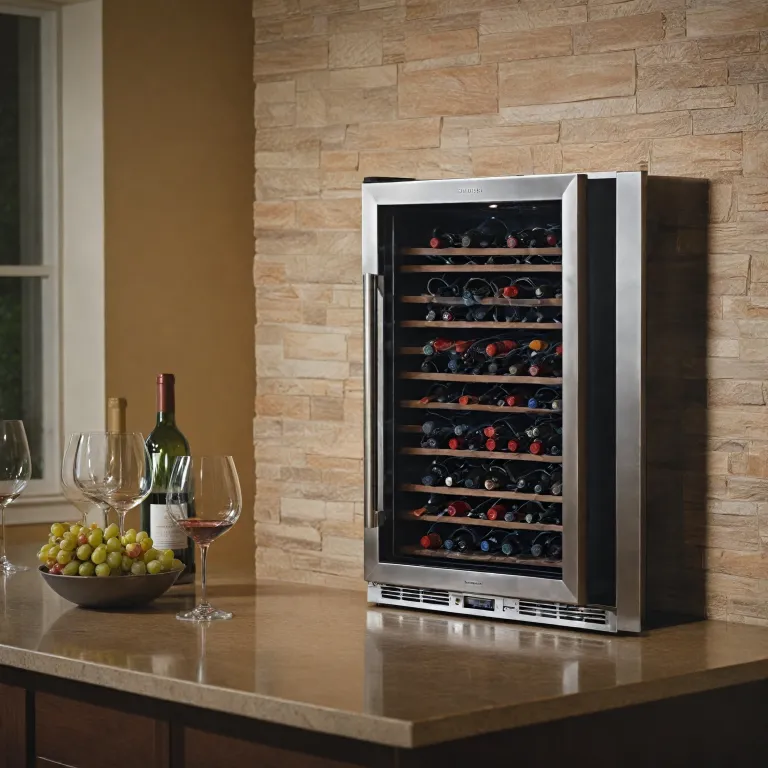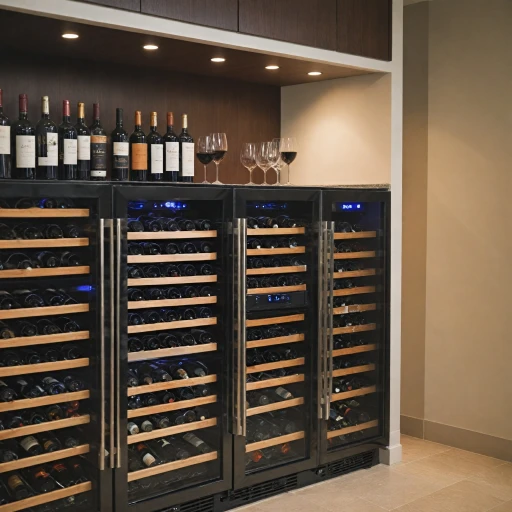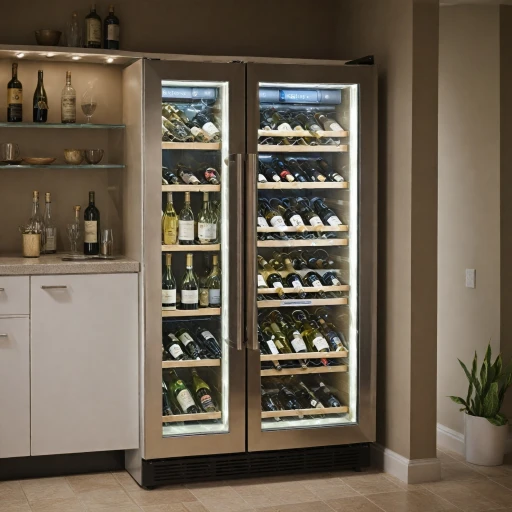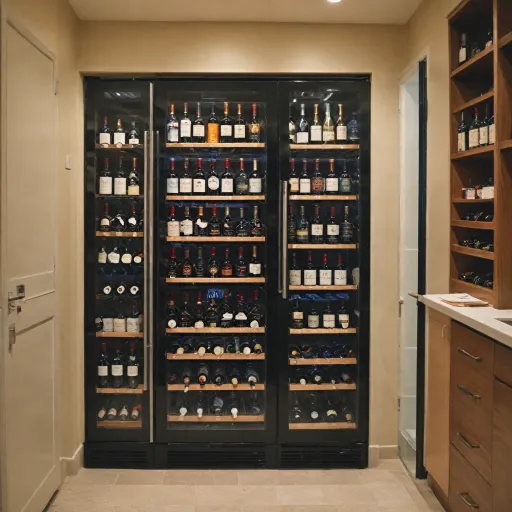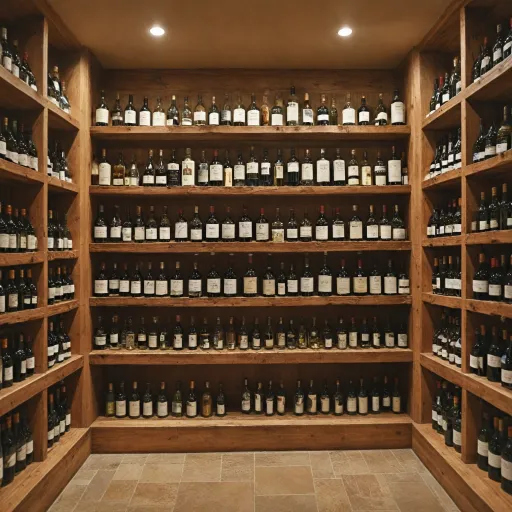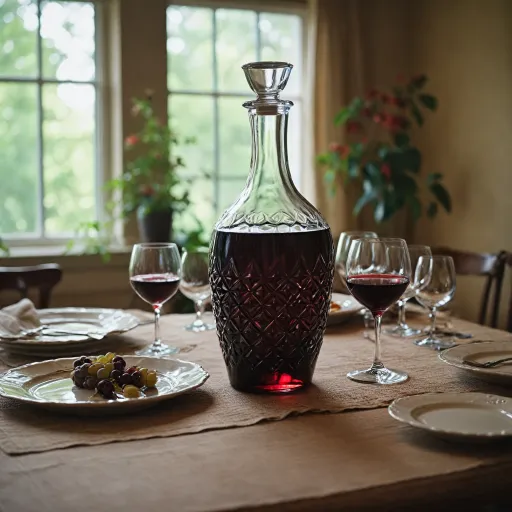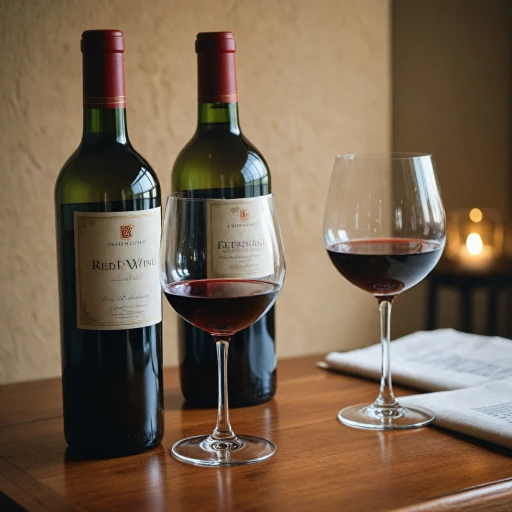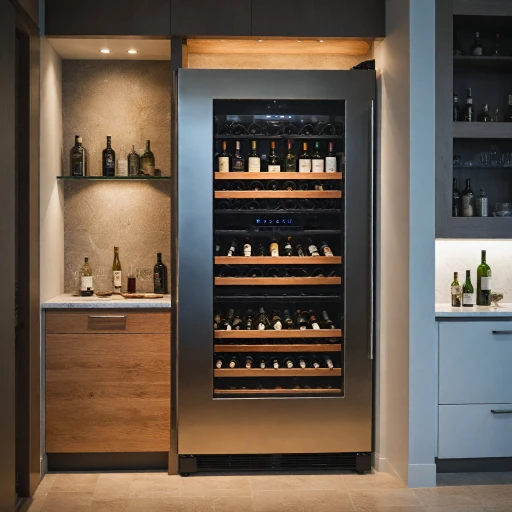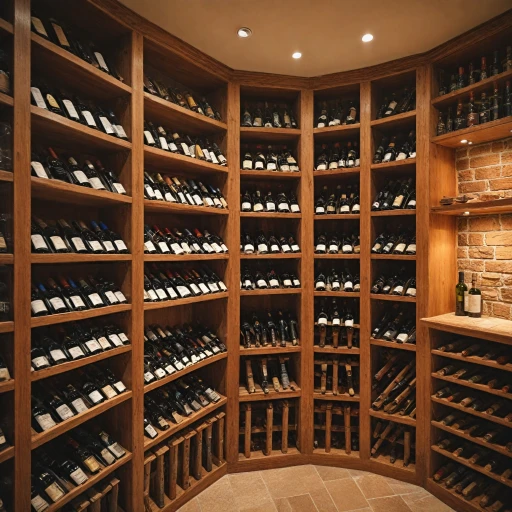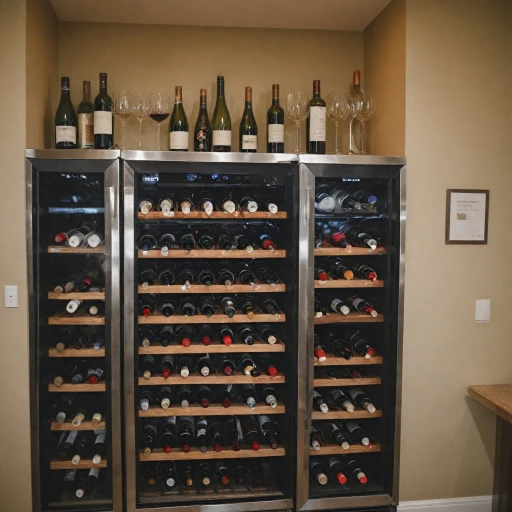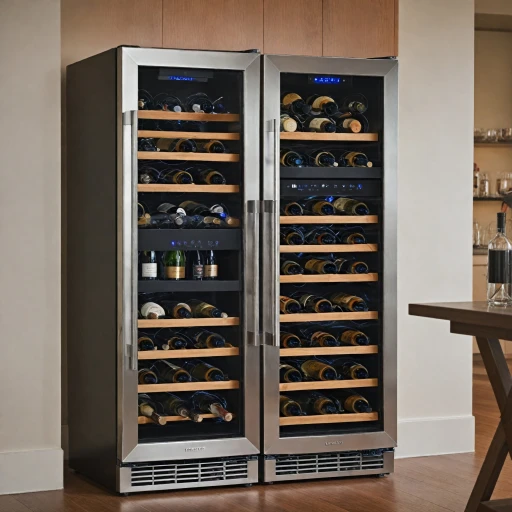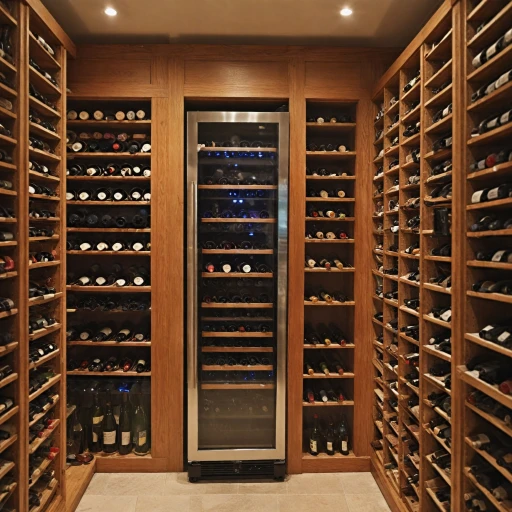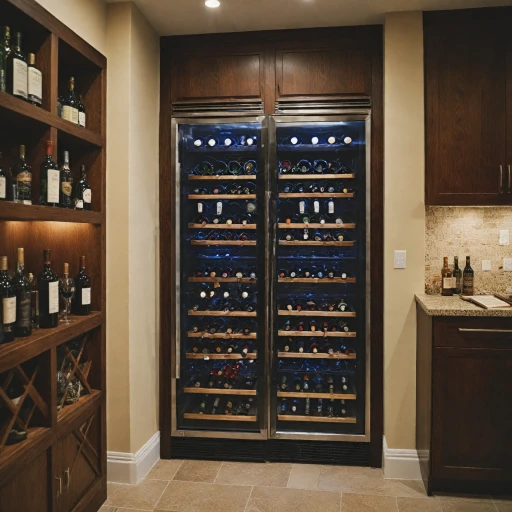
Understanding Wine Types and Their Temperature Needs
Tailoring Conditions to Each Wine Variety
When it comes to serving your wines at their best, understanding the importance of temperature can significantly enhance your tasting experience. Each type of wine has a unique set of temperature requirements to bring out its full potential and taste.
Red Wines: Full-bodied red wines are best served slightly below room temperature, around 60-65°F. This allows the rich flavors to shine without the alcohol overpowering the sensory profile. For light-bodied reds, aim for slightly cooler temperatures between 55-60°F.
White Wines: White wines are generally best enjoyed when chilled. The ideal serving temperature for these wines typically ranges from 45-50°F. This cooler setting helps preserve the crisp, refreshing characteristics that these wines are known for.
Sparkling Wines: Sparkling wines benefit from even lower temperatures, often served at 40-45°F. The cooler environment maintains the bubbles, enhancing the refreshing qualities of the drink.
Storing wine bottles at the ideal temperature is crucial for maintaining their quality. Using a wine fridge or a wine cooler ensures that these precious beverages are preserved in their best state, ready to be enjoyed at any moment. For more detailed insights on the optimal temperature settings for your wine storage, you'll find guidance that aligns with both science and expert recommendations.
The Science Behind Wine Storage Temperatures
The Impact of Temperature on Wine Quality
Understanding the correct storage temperature for different types of wines is essential to preserve their quality and enhance their taste. Each type of wine, whether red, white, or sparkling, has an ideal temperature that brings out its best flavors. Let’s delve into the crucial science behind this aspect of wine storage.
The Role of Chemical Reactions
Wines are complex compositions of organic compounds, which are highly sensitive to temperature fluctuations. When wine bottles are exposed to high temperatures, these compounds break down faster, altering the wine’s taste. Conversely, storing wine at too low a temperature can hinder the development of a wine’s aromas and flavors. Therefore, maintaining the perfect balance in your wine fridge settings is crucial.
Preserving Red and White Wines
Red wines categorically require warmer temperatures compared to white wines. The serving temperature for red wine, particularly if full bodied, should be slightly cooler than room temperature. On the other hand, white wines are best served chilled to bring out their crispness.
Setting Your Wine Cooler
While it's generally accepted that a wine cooler effectively maintains wine bottles, the temperature wine is set to can significantly influence its longevity and taste. Investing in a dual zone wine cooler is advantageous for enthusiasts who have both red and white wines, as it allows for managing distinct thermal environments within the same appliance. By understanding the type wine needs, you can optimize your wine fridge for both storage and serving.
To explore more about maintaining the right wine cooler settings tailored to your collection, you might find our detailed guide on optimal temperature settings useful.
Common Mistakes in Wine Cooler Temperature Settings
Temperature Settings to Avoid in Wine Coolers
Navigating the world of wine coolers can be tricky, especially when it comes to setting the optimal temperature for your collection. A common misconception is that a "one-size-fits-all" temperature setting will suffice for all wine types. However, this is far from the truth as different wines have distinct storage and serving needs. For instance, red wine is ideally stored at a different temperature compared to white wine. Failing to adjust the cooler to meet these specific needs can influence the taste of your wines, leading to an underwhelming experience. Specifically, full bodied reds, which are often best served slightly below room temperature, might lose their nuanced flavors if stored in a typical fridge set for beverages.Importance of Dual Zone Wine Coolers
To adequately cater to diverse temperature needs, investing in a dual zone wine cooler is beneficial. This type of cooler allows you to maintain separate zones, each with its own ideal temperature. By having distinct control for reds and whites, you prevent the risk of serving your red wine too cold or your white wine too warm, each of which can mask the wine's potential.Setting the Proper Temperature Zones
Determining the "best temperature" for wine storage often depends on the wine's type and your personal preferences. Generally, red wines are ideally stored around 55°F (12.8°C), while white wines benefit from a slightly cooler environment, around 45°F (7.2°C). It’s essential to stay vigilant and adjust your temperature settings seasonally to accommodate these needs and preserve the wine's quality. For those using a single zone wine fridge, it might be more challenging to maintain optimal serving temperatures, unless only storaging one type of wine. In cases where multiple wine types are present, prioritizing the ideal temperature for the whites can be a better strategy, as reds are typically brought to serving temperature over time when they are removed from the cooler. Remember that maintaining the proper storage temperatures not only enhances the wine's flavor profile but also contributes to its longevity in your cooler. Learn more about how to enhance your wine storage with a humidity-controlled refrigerator here.Adjusting Your Wine Cooler for Seasonal Changes
Seasonal Temperature Adjustments for Your Wine Cooler
As the seasons change, it can be a tricky task to ensure that your wine cooler maintains the ideal temperature for the varied types of wines in your collection. Adjustments can help maintain the wine’s taste and longevity, allowing you to enjoy every sip at its best serving condition. In warmer months, external temperatures rise, and there is often a natural inclination to increase the cooler’s power. However, it's crucial to understand that this could potentially affect the temperature consistency of your stored wines. For white wines, which taste best served cool, you may consider setting your fridge temperatures slightly lower — around 45°F for lighter styles and 50°F for full-bodied varieties. Conversely, to keep red wines at their optimal storage temperature, you should aim for an average of 55°F. As cooler weather arrives, you might find the ambient temperature dropping, necessitating adjustments in the other direction. It's essential to remember that even in winter, maintaining a controlled environment within your wine cooler is key, as room temperature fluctuations can undermine the wine's integrity. Dual-zone wine coolers are particularly advantageous for these seasonal transitions, as they allow you to set distinct temperature zones for your wine types. White wines and red wines can be stored in separate compartments, so you don't have to constantly tinker with the settings throughout the year. Regardless of the season, regular monitoring is crucial. Invest in a reliable thermometer to accurately gauge the temperature within your wine fridge, ensuring it stays at the best temperature for each wine type. Regular checks can help you avoid common mistakes that could spoil your collection. By adapting your wine storage practices according to the season, you’re not only preserving your wine bottles but also enhancing their serving conditions when it's time to pour.Technology and Innovations in Wine Coolers
Embracing Technological Advances in Wine Coolers
The world of wine coolers is continuously evolving, with innovations enhancing the functionality and performance of these appliances. As more wine enthusiasts seek the best environment for their wine bottles, manufacturers have integrated cutting-edge technology to cater to specific needs.
A significant advancement in this domain is the implementation of dual zone cooling systems. This feature allows the wine cooler to maintain two distinct temperature zones, accommodating both red and white wines in a single unit. Red wines, which thrive in a slightly warmer environment, can be stored at one temperature, while white wines, ideal at cooler temperatures, can be stored at another. This innovation ensures each bottle is served at its optimal flavor profile and enhances the overall taste experience.
Innovations also include sophisticated temperature control systems, which provide precision in setting the best environment for different wine storage needs. Modern wine coolers come equipped with digital displays, enabling accurate adjustments to the fridge temperature. This is crucial for maintaining the ideal temperature tailored to various wine types, from full-bodied reds to delicate whites. Moreover, some models feature smart technologies that allow you to control the cooler remotely via a smartphone app, ensuring that your wines are always stored in perfect conditions, even when you're away.
Aside from temperature regulation, modern coolers focus on minimizing vibrations—essential for preserving the subtle flavors and aromas of the wines. Enhanced insulation and advanced compressor technology help in maintaining consistent temperatures without disturbing the wine's resting state.
Finally, UV-resistant doors and energy-efficient systems are integral parts of today’s designs. These features protect your wines from harmful light exposure and reduce energy consumption without compromising storage efficiency. Investing in a technologically advanced wine cooler not only improves your wine storage experience but also offers peace of mind knowing your precious collection is in the best possible care.
Expert Tips for Maintaining Your Wine Cooler
Preserving the Quality of Your Collection
For every wine enthusiast, maintaining the quality of your wine collection is paramount. Proper storage and serving temperatures are crucial, but so is ensuring that your wine cooler operates optimally. Here are some expert tips to help you maintain your wine fridge at its best.Regularly Clean and Inspect Your Cooler
A clean cooler is essential for maintaining the taste and integrity of your wines.- Interior Cleaning: Remove all wine bottles and clean the shelves every few months.
- Exterior Care: Clean the exterior to prevent build-up of any dust or grease.
Avoid Overloading the Fridge
While it might be tempting to store as many bottles as possible, overcrowding limits airflow, disrupting the ideal temperatures needed for each type of wine.- Optimal Capacity: Follow the manufacturer's guidelines for capacity.
- Spacing: Ensure there is adequate space between bottles for proper airflow, which helps maintain the necessary cooler temperatures.
Adjust Settings Seasonally
Seasonal changes can affect the ambient temperature surrounding your fridge.- Warmer Months: You may need to adjust the setting upwards by a few degrees to maintain an ideal storage temperature.
- Cooler Months: Conversely, lowering the settings slightly can help preserve full bodied reds at their best temperature.
Consider Energy Efficiency and Noise Levels
Modern wine coolers come with energy-efficient technology, reducing electricity consumption while keeping your wines at the right temperatures.- Energy Ratings: Check that your cooler has a good energy rating, indicating efficient power usage.
- Noise Consideration: Ensure your cooler operates quietly, which is often an indicator of quality in design and function.
